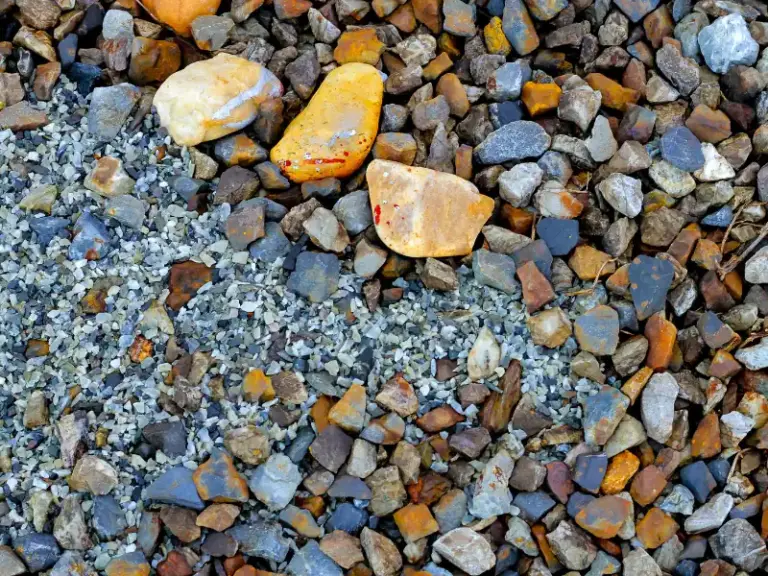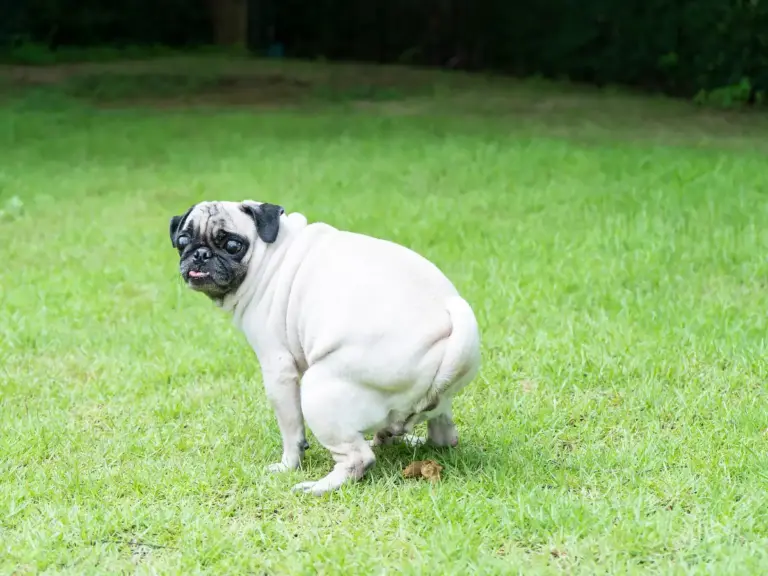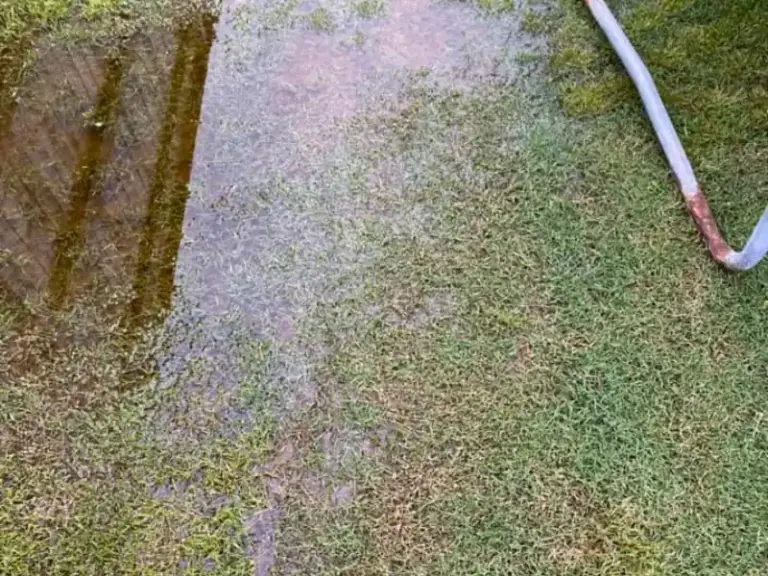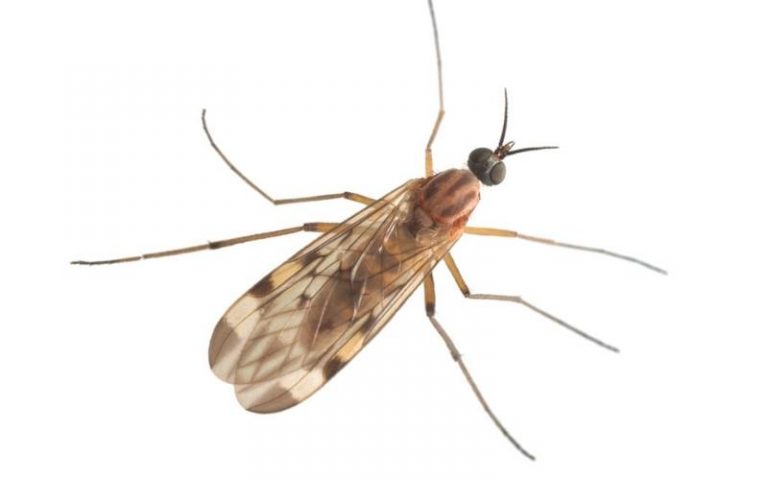How to Get Rid of Rat Holes in Yard and Garden
Rats are a destructive nuisance when they infest a yard full of structures and vegetation. When left uncontrolled, their populations skyrocket, and soon they start digging and burrowing in lawns and causing unsightly holes all over the yard.
Rats will dig holes in the ground to build their nests, hide, and gain entry to your home to look for food. As with any other pests in your home, you want to make sure you positively identify rats and mice to apply the appropriate pest control solutions that won’t harm pets and other animals in your home.
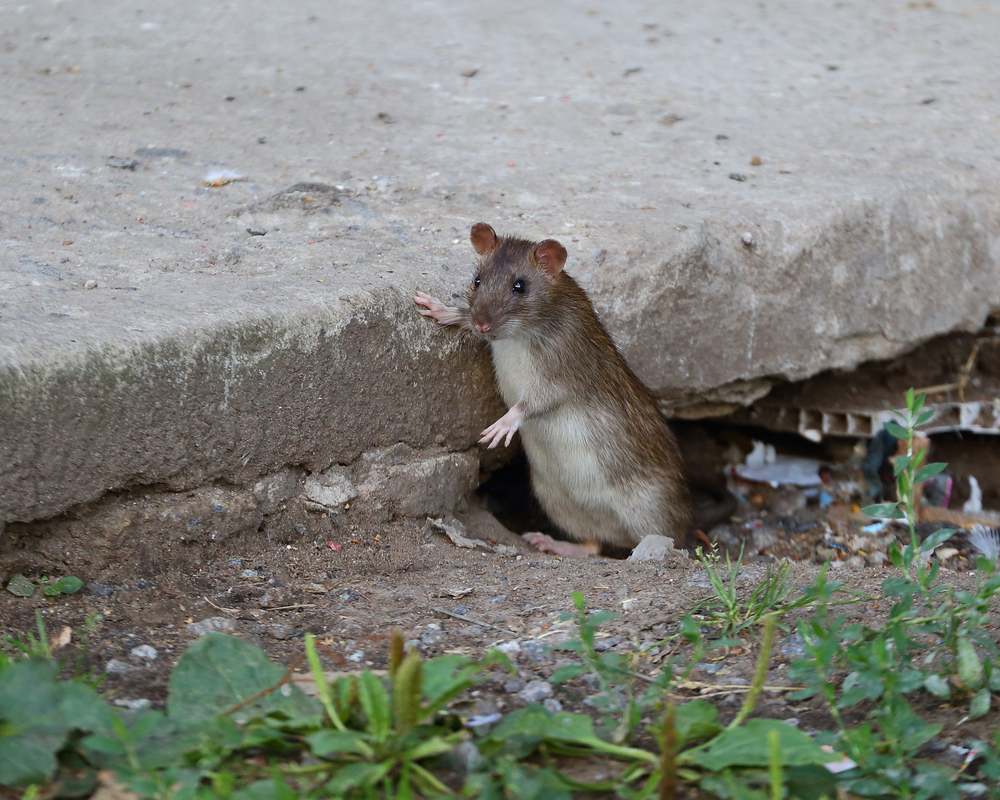
Identifying rat holes
Identifying rat holes can be tricky as they’re often confused with holes made by other garden dwellers. So, what do rat holes look like?
Rat holes are typically 2-4 inches in diameter and are often found near structures like fences, walls, buildings, or near dense vegetation. Burrows are 12-18 inches deep, while their tunnels can go as deep as 3 feet.
Fresh and active burrows have smooth walls and loose dirt near their entrance due to the rodent’s activity of kicking out the soil as it digs deeper underground. If you want to check whether rats are inside, lightly stuff some newspaper into the hole. Rats will quickly move the newspaper out of the way if they do exist in the burrow.
If the hole is less than two inches in diameter, an insect or bird could be the culprit. Rabbit holes are slightly larger, measuring approximately 4 to 6 inches wide and sloping downward at a shallow angle. Holes larger than those of rabbits and Norway rats are likely to have been dug by other animals, such as skunks, armadillos, or coyotes
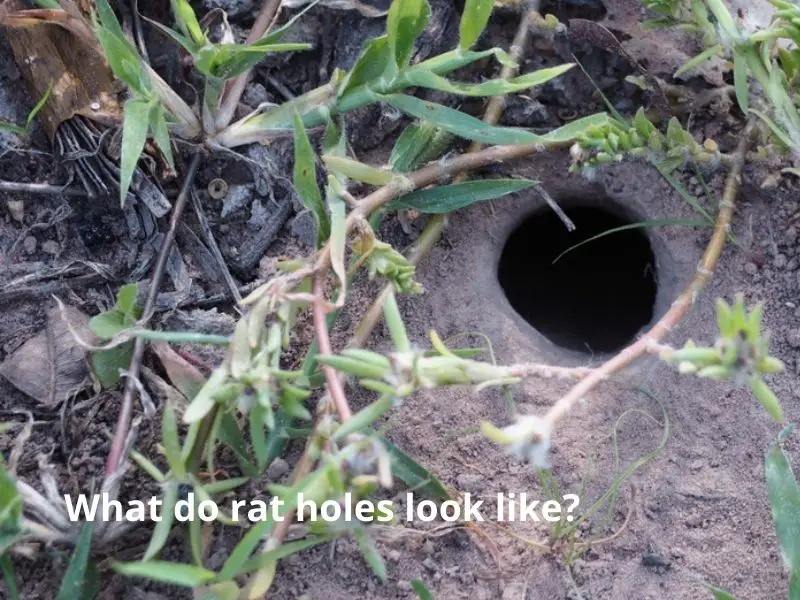
Expert tip: Rat infestations are common near water and food supplies like trash cans and bird feeders. You might detect traces of nibbling on surrounding objects or watch rats darting in and out of the holes.
How to get rid of rat holes in your yard
You can start with a deterrent such as Critter Ridder before using creative and attractive techniques to hide and remove rat holes from your garden. First, think of filling and covering the holes to restore the aesthetic appeal of your lawn. Here are creative ways of covering the holes and burrows:
1. Cover the holes with wire mesh or hardware cloth
To ensure there are no gaps for the rats to enter, cut the mesh into the proper sizes and firmly adhere it over the entrances. This technique successfully prevents them from entering while enabling airflow and drainage.
2. Fill the rat holes with soil and sand
Eliminate the rat holes and burrows by backfilling them with soil and sand or gravel to help stabilize the ground and discourage further excavation. Since the burrows are not very big, you’ll need just a little dirt to backfill them.
If you’re dealing with just a few holes in your lawn, you can fill them with old potting soil or a garden mix and re-establishing grass in the damaged area with sod. This technique works really well for me in areas with moderate damage from burrowing.
Remember:
Rats are intelligent creatures who can dig up new holes even if you’ve already filled up the previous one. So, when sealing the holes, ensure you apply the following measures to prevent them from digging new holes:
- Remove pet feces from the ground as they attract rats.
- Place leftover pet food in an airtight container, not an open bowl.
- Seal the holes with cement and soil
- Use a wire mesh to cover the holes
3. Place patio furniture or plant pots over the holes
Another strategy is to carefully place patio furniture or pots over the holes to block the rats’ entryways while improving the overall appearance of your garden.
Concrete planters are preferred over plastic or clay planters in areas infested with Norway rats, but you’ll still need to eliminate the rodents from your yard to solve the burrowing problem for good.
4. Cove the holes with pavers or stepping stones
Depending on where the holes are located in your yard, carefully place small stepping stones or decorative pavers to create a beautiful pathway. Ensure they are level with the surrounding ground so they don’t look odd.
Secure the stones or pavers in place with gravel or sand to improve their stability and prevent accidents whenever someone steps on them.
5. Grow groundcover plants over the holes
Plant low-maintenance ground cover plants such as creeping thyme or moss to cover the holes naturally. With time, roots and soil will move into the rat holes as the vegetation covers them aboveground to make your yard look beautiful again.
With proper soil preparation and plant care, such groundcover plants establish and spread within a short period, making them the ideal quick fix for the unsightly holes left behind by Norway rats in your yard.
6. Compact the soil to discourage burrowing
Compacting the soil can discourage rats from digging and burrowing in your lawn. If your yard is mainly for ornamental trees, compacting the soil won’t cause much stress to the plants.
However, if rats are digging holes in your lawn, compacting the soil is not an option as it will lead to poor development of grass. Turfgrass prefers well-aerated soil, so compacting the ground is highly discouraged.
You can also plant densely, especially with thick-rooted plants that can deter burrowing.
Humane ways to get rid of rats and prevent burrowing
Rats are nocturnal and love their privacy.[2] They prefer leaving their holes at night to look for food. Therefore, if you notice rat droppings or drag and gnaw marks anywhere near the holes during the day, wait until nightfall to monitor their movements. Once you spot them entering and exiting their holes, devise a suitable rat control plan.
Here are some humane ways to get rid of rats that dig holes in your compound.
1. Live trapping and relocation
When it comes to humane ways of dealing with the rats, live trapping is an option, but you need to make sure you’re following local laws about releasing them. Embrace the ingenuity of humane traps, designed with compassion in mind. These devices capture rats without causing harm, allowing for their safe release far from the boundaries of your property.
2. Remove rat attractants
Another important tactic is to remove the things that attract rats in the first place: accessible food sources, like open compost bins, and shelter, like brush piles. Make your yard a less attractive home, and they’ll be more likely to move on.
Start by getting rid of any food sources that can attract rats, such as fallen fruit, open trash cans, or bird feeders. Avoid leaving pet food or birdseed outside overnight. Harvest ripe fruits or vegetables promptly and clear fallen debris from trees or shrubs. By removing these food sources, you decrease the attractiveness of your yard to rats.
3. Plant rat-repellent plants
Rats don’t enjoy the smell of mint, lavender, or marigolds, so think about growing these plants as natural deterrents to eliminate the rats in your yard.
4. Apply rat repellents on the rims of the holes
While rat poison near the burrows will effectively kill rats, it is not recommended because of the risk of poisoning people, pets, and other non-targeted animals.
Instead of rat poison, apply non-toxic rat repellents, including the following:
Peppermint oil and powdered pepper
The smell of peppermint repels rats. Therefore, soaking a ball of cotton wool in peppermint oil and placing it near the entrance of rat holes will repel them. The powerful smell will discourage the rats from residing in your yard.[3]
When mixed with spicy powdered pepper, peppermint oil repellent becomes even stronger and more effective
Cotton balls soaked with peppermint oil can be placed in nooks and crevices that you believe to be the warm homes of these critters. To keep them at bay, repeat every few days.
Ammonia
Alternatively, strategically placing cotton balls soaked in ammonia near rat-prone areas can serve as an effective and natural repellent.
Use human hair
Rats love their privacy. The presence of human hair near their holes is enough to drive them away. So, you can clip a few strands of your hair and drop them in infested areas.
Use an owl’s feather
Owls prey on rats, and placing their feathers in infested areas can help keep rats away. You can also install an owl prop in areas of your yard where rat infestations are a nuisance. Keep in mind that this method is not 100% effective.
Rats are intelligent and adaptable creatures, and their behavior is influenced by various factors such as access to food, shelter, and other conditions. While some rodents may exhibit caution or avoid areas with unfamiliar objects, including owl feathers, the effectiveness of this method is generally low.
I recommend moving owl props as an effective alternative to deter Norway rats from digging holes in your lawn at night.
5. Clear bushes around your yard
Consider regularly cleaning your yard and removing debris or potential nesting materials. Trim grass and vegetation to reduce hiding spots. Keep firewood stacks elevated and away from walls or fences. By maintaining a clean and well-maintained yard, you create an environment that is less conducive to rat habitation.
Expert note: Outdoor rats don’t just rely on leftover foods in trashcans or bins. Instead, they can eat plants to survive. So you want to ensure you mow your lawn on time and keep flower beds and edges well-manicured.
6. Flood out the hole with water
Using your hosepipe, apply water into the holes for around two hours. This method is effective because pressurized water signals the rats to use their exit routes to run away and not think of returning.
The best time to flush out rat holes is in early spring or late winter when they are about to reproduce. While this solution may be effective, you may want to take extra measures to ensure they don’t dig new holes in your yard in the future.
7. Place ultrasonic rat deterrents around your yard
Ultrasonic devices offer a humane solution. These devices emit high-frequency sounds that are unpleasant to rats but inaudible to humans.
By installing such devices in your yard, you can deter rats from establishing their presence without causing harm. Their only downside is that they’re likely to deter other animals like squirrels from your yard.
8. Install a rat-proof fence
A fence made of hardware cloth or welded wire mesh can help keep rodents out of the yard. Be sure the fence is buried at least 1 foot deep into the ground and extends up at least 2 feet high to be effective at preventing rats from entering your home.
Remember, rats can gain entry through holes as small as ½-inch in diameter, while mice require spaces at least ¼-inch in diameter to gain entry.[1] Therefore, while installing a rat-proof fence, ensure that its spaces are smaller than these measurements to prevent rats and mice from gaining entry into your yard.
The damage caused by rats
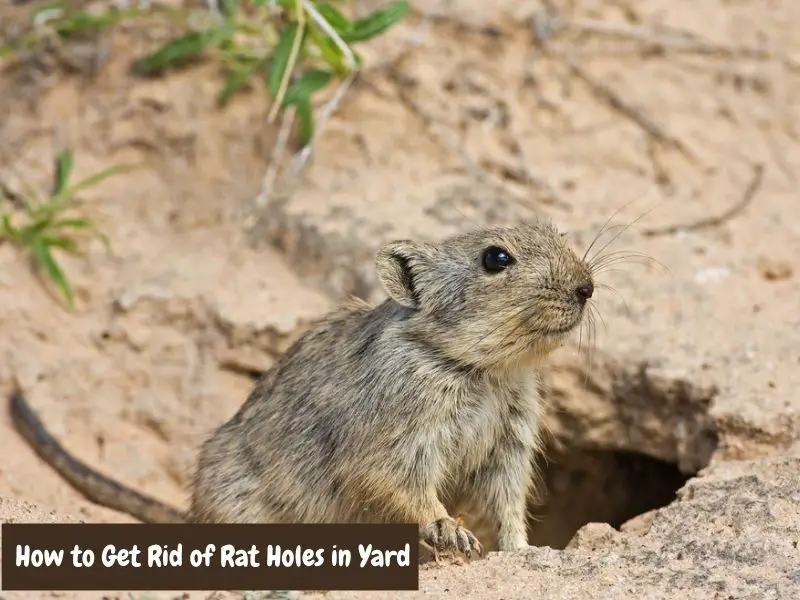
- Burrows can undermine the stability of pathways, patios, and garden features. Their activities may weaken the ground, leading to sinkholes or collapse of the surface. No one wants to step into a hidden hole and twist an ankle.
- Rats compromise the structural integrity of buildings and outdoor structures: They may impair foundations or structural integrity due to their burrowing activity, which could eventually result in structural damage.
- Unsightly lawns: Too many rat holes in a lawn can affect its appearance.
- Plant and root disturbance: Rats are known to damage plant roots, bulbs, and tubers while digging their burrows. This can result in wilting, stunted growth, or the death of your yard’s vegetation.
- Disease transmission: Rats carry various diseases and parasites that can pose a risk to humans and pets. Their presence near your home can increase the chances of contamination and the spread of illnesses.
The damage caused by rat holes is both aesthetic and structural. They create unsightly pits in your lawn and gardens, but the real issue lies beneath the surface. The tunneling can compromise the structural integrity of sheds, walkways, or other structures.
FAQ
Conclusion
However, should the rat infestation persist or become unmanageable, it is advisable to seek the assistance of professional pest control services. These experts specialize in humane and effective rat removal techniques, ensuring the safety of both humans and the rats themselves.
By combining vigilance, smart strategies, aesthetic considerations, and a humane approach, you can effectively address rat holes in your yard while maintaining the beauty and integrity of your outdoor space.

